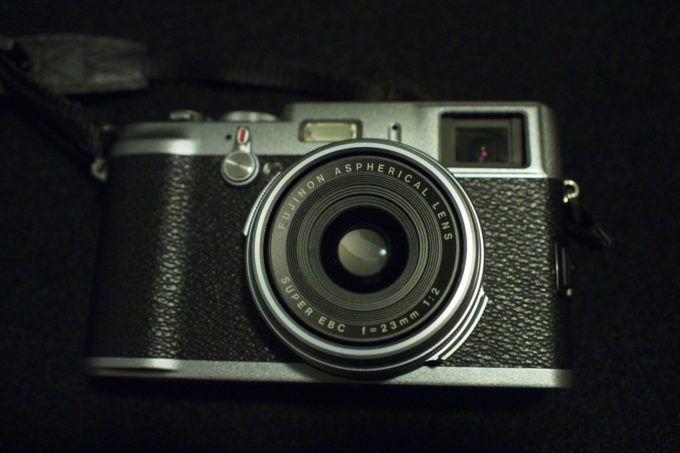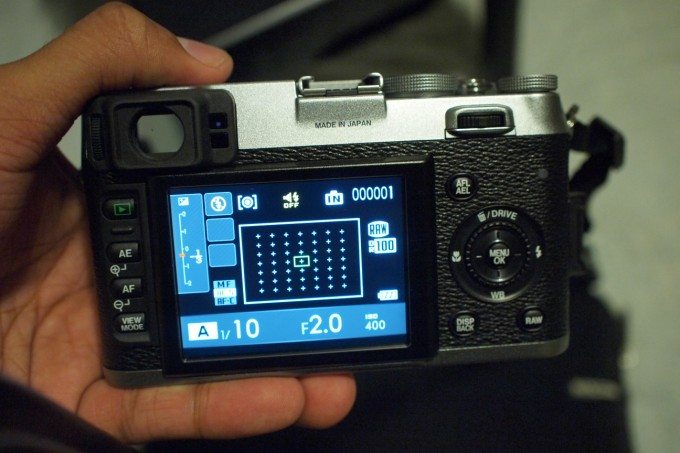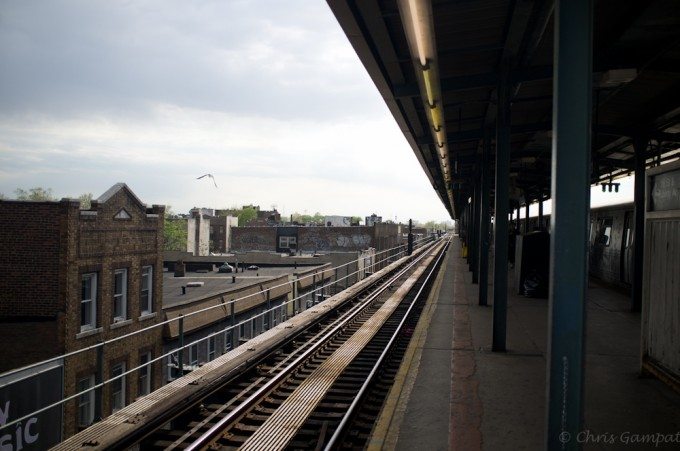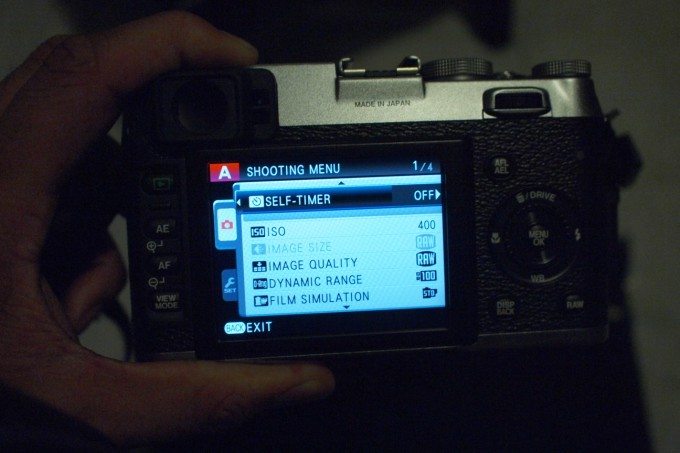Last Updated on 05/15/2011 by Sander-Martijn
At long last, we’re done (sort of)! While this is the end of the Fuji X100 review, we’re going to be testing it against the Leica X1 very soon. But in the meantime, here are our findings on this amazing camera.
Complete Postings
Day 1: Getting a feel for the camera and some quick tests in my neighborhood.
Day 2: Macro tests, quirks with the metering, talking about the wonderful image quality, and shooting portraits with Ryan Brenizer.
Day 3: Showing off the film modes while once again talking about the metering. In this posting I also explain how wonderful the viewfinder is.
Day 4: Tried and failed terribly at shooting a couple of product photos for a friend. The on-camera flash is very weak and the macro focusing mode can be very slow at times.
Day 5: Testing the neutral density filter, high ISOs, metering, and auto white balance.
Day 6: High speed flash sync, an amazing photo on the subway, and a complaint about the battery life on this camera.
Vs the Olympus EP-2: It seemed many of you couldn’t tell the difference between the two images.
Ergonomics
When you pick up the Fuji X100, it feels like you’re picking up a piece of history. The camera is styled very much like an old-time rangefinder. In the hand, it feels solid and not like a cheap toy. The buttons can be a bit overwhelming at times but with use, the learning curve is a short one.
The only weird thing was that I didn’t at first realize that the switch on the top right back side and the scroll wheel dial on the back both helped to fine tune your exposures: with both adjusting the camera’s apertures and shutter speeds accordingly.
Another problem of mine was that I wished the Macro focusing mode was on the side of the camera with the other focusing modes. Other than these small requests though, the rest of the camera is designed very solidly and for the most part very clutter free. There wasn’t one button on the camera that I didn’t use.
Metering
This was my biggest problem with the camera. When I first started using it, I initially threw all of the meter’s readings out the window. Then it started to work better and better: which I didn’t understand at all but have read similar reports of on forums. When I eventually ended up doing was overlaying the histogram in the viewfinder to help with adjusting my exposures.
Because of this, I have to give this camera an inconsistent metering rating just to be fair.
Don’t let this put you off though: all cameras have metering problems and some are better than others with Nikon being one of the best I’ve seen. In the end though, I’m use to dealing more with Sekonic meters because of my recent work.
Autofocus
The Fuji X100 has a contrast detection autofocus system that is similar to those found in Micro Four Thirds cameras and point and shoots. There are many focusing points but in my experience it’s often best to just use the center and recompose. In great lighting such as outdoors during the day, it’ll focus like a charm. In the studio with a modeling light, it will also have no problems: just remember to switch it to macro mode if you’re shooting up close and personal.
With all this said, the camera struggles in low-light while inside but did fairly well in the street of NYC at night when I tested it.
Is it for everyone? It’s quite bearable to be honest. My peeves come with manually focusing. In the optical viewfinder mode you have no depth of field perception because of the way the optical viewfinder works. To compensate for this, Fuji put in a distance meter on the bottom of the viewfinder.
In contrast, when the cameras is set to the electronic viewfinder mode, you’ll have no problem focusing manually: just get ready to really turn that manual focusing ring in order to make your adjustments. Reason for this is because it isn’t very sensitive: nor did I feel it was totally consistent throughout focusing.
Admittedly, a rep told me that this camera was designed more for manually focusing.
Image Quality
There really isn’t a single fault that I could fine with the image quality from this camera. Both professionals and hobbyists alike will both love the files that come from this camera. Their dynamic range and color depth are both very good and that can help you to create better images in the digital darkroom: especially if you need to correct the white balance which yields very true to life results.
Once again, with good image quality comes the need for knowledge on how to meter correctly. If you can tame the beast, you’ll have no problems. With this said, this isn’t a camera for the beginner. It was designed for someone with experience that wants a more powerful and compact camera.
High ISOs
Once again, no major complaint here at all. There was some noise in the blue areas, but overall once can’t complain about the high ISO output they can get from a camera like this with an APS-C sensor. The files will need some editing for noise reduction, but there is no real reason to worry about it too much.
Menus
The menus are long and require scrolling through in order to get to the features that matter to you. For me, it was all about activating the external flash mode, taking off silent mode, adjusting the LCD panel’s brightness, etc. I fully understand that there is a need for the long menus with the design of the camera though. However, a couple of switches or more programmable buttons would’ve been preferred.
Conclusion
Overall, the Fuji X100 is a hit and has received some flak on the internet in reviews but has also received quite a bit of praise. Make no mistake, this camera deserves all the praise and only most of the flak. The battery life issues are very true and indeed, the camera still feels a bit like something that wasn’t completely done or that could’ve been made better. To be fair, people said the same thing about the Canon 5D Mk II when it came out but in the right hands, the full frame game-changer has done some fantastic work.
This camera forced me to slow down with my street photography, and I owe it quite a bit for that because it’s a huge difference from my photojournalism training. Sure, I could probably shoot film, and I have before. But in the end, I’m a digital guy that prefers to import images into Lightroom and tweak them to no end until I can get the best image possible.
Will I be buying it? Probably not, though I’m extremely tempted. The reason why is because I feel that my Olympus EP-2 delivers some great results that I’m very happy with in a smaller package and with interchangeable lenses. Sure the sensor isn’t as good, but the camera’s image flaws can be made up for with the art filters: which are super fun to use with something like a Lensbaby. Indeed though, I’ve often thought about buying it to compliment the EP-2. If I did this, I’d buy another lens for my EP-2 as well so that I’d have a 35mm equivalent and perhaps a 50mm or 100mm equivalent on the camera.
In the end, the Fuji X100 gets mostly great rating all around but has some workable flaws in other areas. Either way, it’s on my highly recommended list of cameras.
You can purchase the Fujifilm X100 from B&H Photo. Please also consider making purchases from Amazon by clicking the links as they help to support this site.
Please Support The Phoblographer
We love to bring you guys the latest and greatest news and gear related stuff. However, we can’t keep doing that unless we have your continued support. If you would like to purchase any of the items mentioned, please do so by clicking our links first and then purchasing the items as we then get a small portion of the sale to help run the website.










